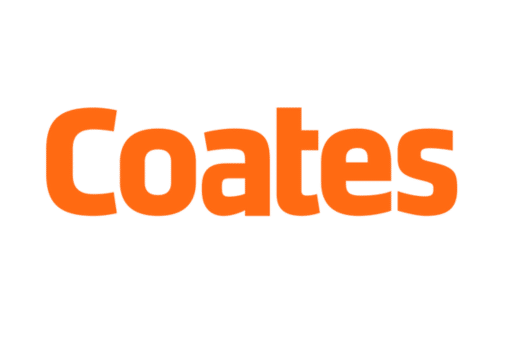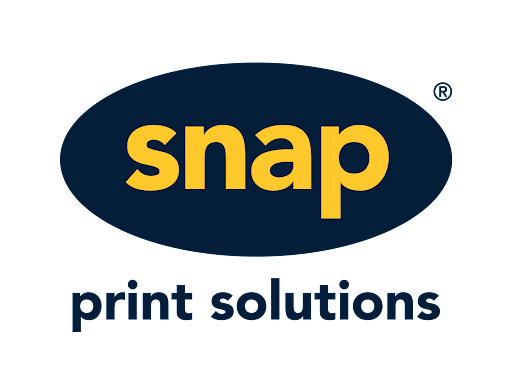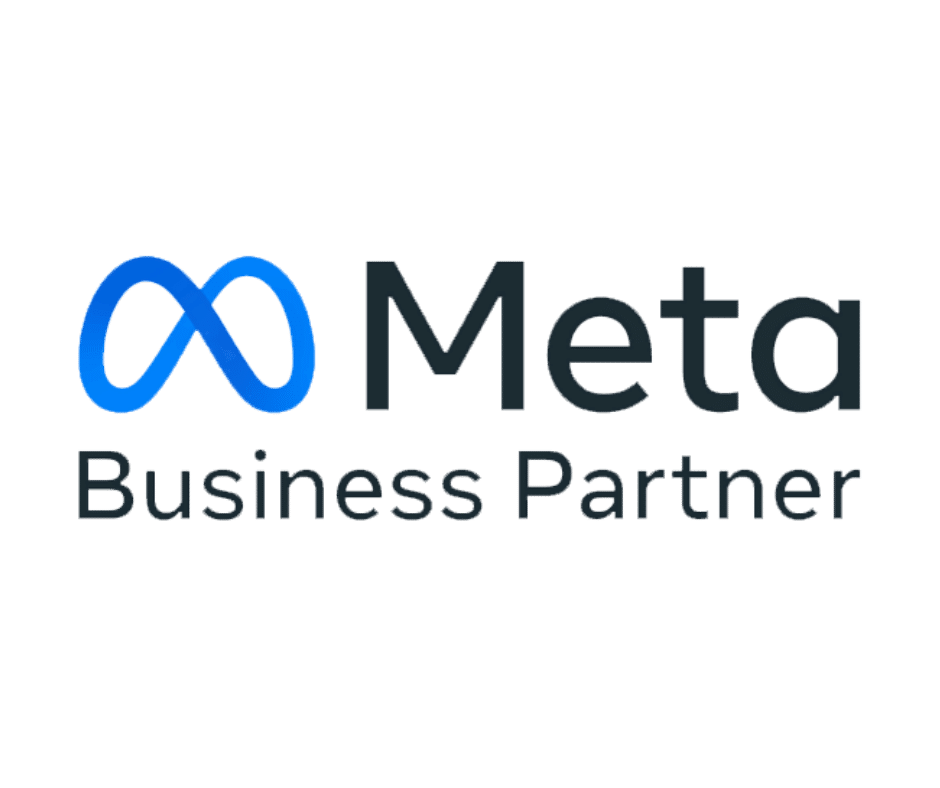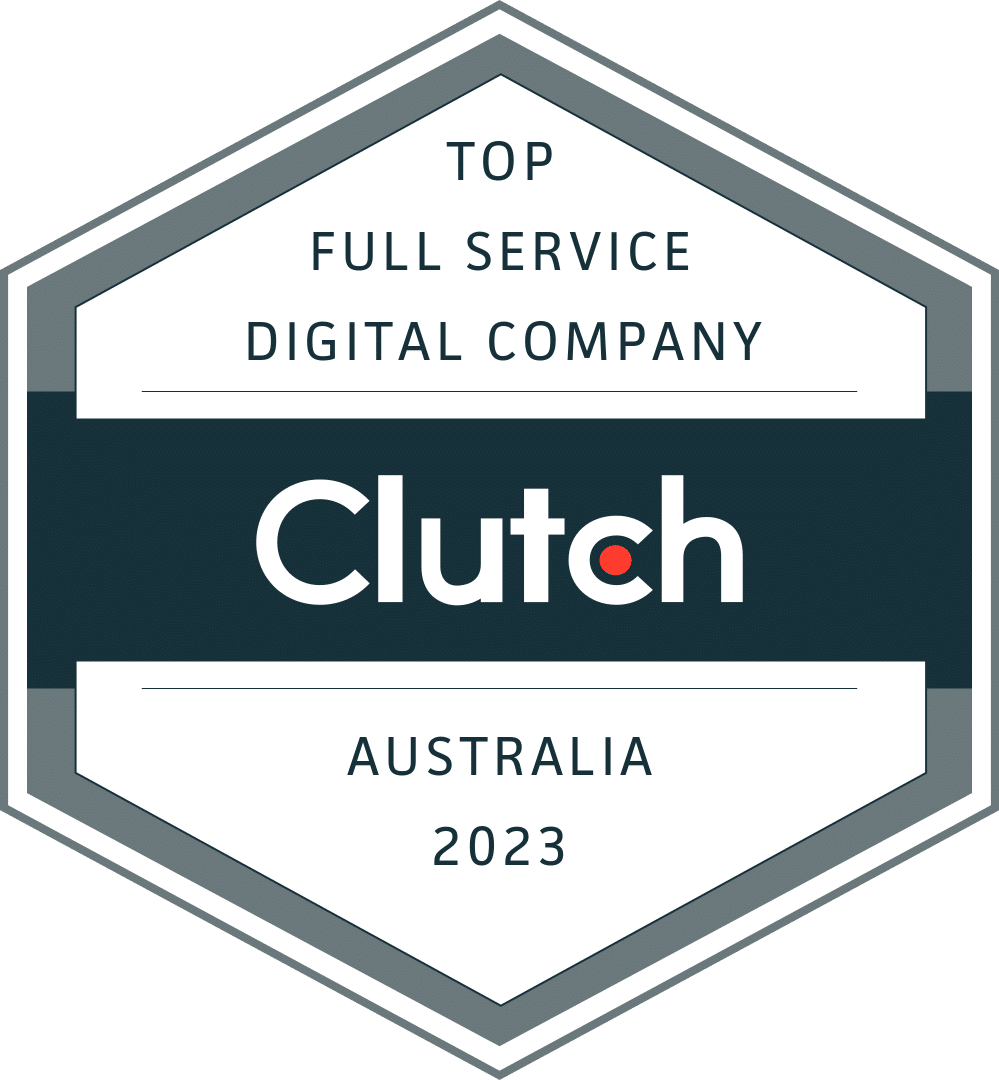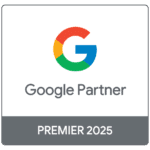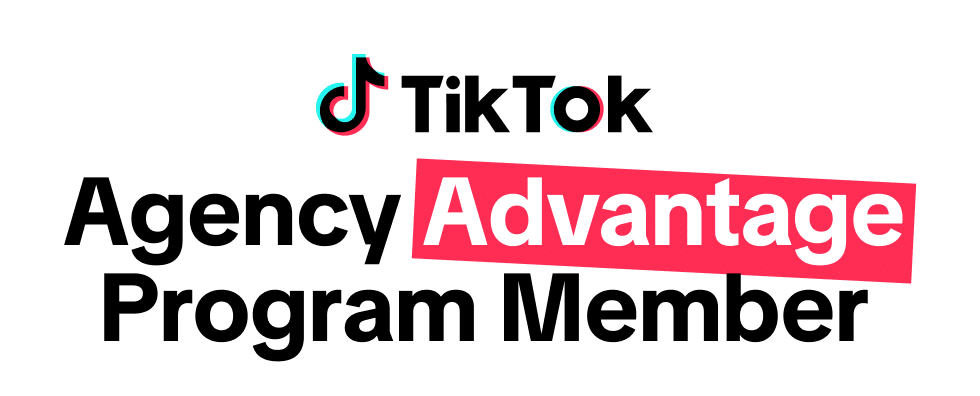Measuring the Impact of Your Marketing
Episode Description:
Understanding your user journey and tracking their path to purchase is vital when forming a strategy and allocating your marketing budget to appropriate channels. Paul Sinkinson shares how the best marketers use data, creative assets, and AI to make smart marketing decisions.
Key Takeaways:
- Combining mixed models with attribution models
- Successful measurement is a journey, not a deliverable
- The biggest challenges that marketers are facing
- How data and privacy are impacting attribution
- The value of strong brand creative
- How to achieve contextual behavioural targeting with the offset of cookies
- Why depending on AI can be a hindrance
Featuring:
About the Guest:
Paul Sinkinson is the Managing Director of Sydney-based global marketing consultancy Analytic Partners, which delivers customised analytics that improve sales and marketing ROI. He has over 20 years of marketing analytics experience across many of Australia’s leading brands, and was previously a Partner at the Leading Edge, and Director at Nielsen, to name a few.
Podcast Summary: Measuring the Impact of Your Marketing
Paul Sinkinson, MD of marketing consultancy Analytic Partners, shares why it’s hard to measure the impact of marketing, why businesses should invest in brand marketing and the long-term value of compelling creative.
The biggest challenge for marketers today
Paul shares that some businesses don’t give marketing teams the credibility they need and deserve. These businesses consider marketing a nice-to-have vs. a must-have. Another challenge is the difference in hard metrics—while marketing is invested in driving awareness and intent, the business is likely talking about sales and profits. This causes an immediate misalignment because, in such instances, marketing is left out of top-level business discussions.
Paul also shares that marketers face an ongoing challenge due to the short duration of CMOs' leadership roles and the difficulty of engaging senior stakeholders.
The impact of poor online marketing data on how marketers allocate resources
Measuring the impact has become more challenging over the years. Before, one could map out a clear path to purchase by looking at different data points and online interactions using cookies. Now, 54% of Australians have opted out of cross-site tracking and are using ad blockers, which means marketers don’t have access to good data anymore.
Paul and his team did an experiment to understand what happens when they don't have complete data. They used a special method to rebuild their tracking models and found that 59% of typical online activities like clicking and scrolling weren't recorded. However, they noticed that only 8% of sales or final actions were missing, which was a surprisingly small amount compared to the missing interactions. They realised that many missing interactions happened after a person stopped allowing cookies or cross-site tracking.
They also noticed a big change in user behaviour. Before, when cookies were common, a user would typically interact about four times during their visit to a site. Now, those interactions have dropped to 2 to 2.5 per visit, and if you also consider users with ad blockers or those avoiding tracking, the number of interactions goes down to just one.
This lack of data means it's harder to understand which marketing channels are effective, leading to potential misinvestment. This situation strongly supports using mixed models - by combining different types of data, these models help fill in the gaps and guide better decisions for your business.
How to work with a small marketing budget
Paul says that for smaller firms with lower budgets, pumping money in search can still generate results. However, it’s a trade-off as such campaigns can deliver results in the short term, but have no impact on long-term sales.
As your resources expand, your media spend will too, and it’s important to know the tipping point where you have to decide whether you need to start coming off performance marketing, and should focus more on other activities that will shape your strategy and improve it. For instance, if you’re not utilising creative that can strengthen your brand image and work wonders over a long period of time, any long-lasting brand awareness you could’ve built would decay fairly quickly.
Small businesses can also effectively measure their marketing
Good marketing measurement is not just for big companies - small businesses can also measure their performance effectively on small spins by switching performance marketing on and off (which is easier to do in a small firm as well).
At the same time, if you’re convinced your business is inching toward explosive growth, it’s a fantastic idea to invest in great brand creative, which outperforms performance messaging 80% of the time, Paul mentions.
The synergy between brand and performance marketing
Paul stresses the importance of balance, noting that while performance marketing can quickly deliver results, brand marketing builds the foundation for long-term sustainability and growth.
How long should you keep a campaign running?
In short - longer than you think. Marketers often pull the plug on their campaigns too quickly, before the creative has fully run it’s course. .
Paul shares an example - one of his clients had been pumping 15% of their budget on a campaign inconsistently. Sometimes it ran for 8 weeks, sometimes 6 - quite on and off. When the client decided to run the campaign for 40 continuous weeks, their return on investment (ROI) went up 2.5x after 4 years. Where they would previously earn a dollar from their inconsistently run campaign, they now earned more than 2. Every time you think you need to change campaign creative, you probably don't.
The takeaway - Consistency is the unheralded superhero of marketing effectiveness.
When is a campaign or creative ready for change?
When your campaign’s results start to fall, a change is needed. When a brand-focused campaign starts dwindling, performance marketing campaigns should contribute and help recover the results. This balance between brand campaigns and performance campaigns is unique to different industries and use cases.
The importance of balancing brand and performance
If your brand spend falls below 30%, your ROI starts falling because brand activity often acts as a catalyst for performance activity. This benchmark can help you allocate resources more optimally and help drive consistent results. The balance towards brand spend will be higher for industries with a longer sales cycle. As renowned brand consultant and marketing professor Mark Ritson emphasises, great brand creative will drive short-term sales, but rarely does great short-term, sales-focused activity drive long-term results.
What is ‘business size exposed’?
An interesting point mentioned is the idea of ‘business size exposed’. This means that general advertising for the whole brand can boost the entire company, not just certain products or services, unlike product-focussed performance campaigns. It highlights how effective brand marketing can be in improving the overall success of a business.
Why creative is critical to your marketing effectiveness
The quality of your creative plays a sizeable role in the effectiveness of your marketing, contributing to two-thirds of the potential ROI improvement.
Marketers should certainly invest in getting creative right. At the same time, remember that your ongoing campaigns and creatives can probably burn for a bit longer and continue to drive results. This also helps people remember your brand for longer so it’s top-of-mind when the need for your product arises.
The hallmarks of good creative
Making your creative best-suited for your campaign’s goal is more important than it being the best creative across your chosen platform. If you’re launching a TV ad, your ad doesn’t have to be the best TV ad, Paul says. Instead, the creative concept should be the best for the campaign so it’s effective across TV, BVOD, YouTube, TikTok and work regardless of the length of the commercial.
Looking ahead: the role of AI in marketing
While AI can make processes faster and offer new insights, it's not advanced enough to replace human judgment and supervision. AI can automate data processing quickly, but it has a downside: it often produces errors or misleading responses, known as 'hallucinations.' These mistakes can result from biased or flawed data used in training AI, like gender or ethnic bias. For now, AI cannot fix these mistakes on its own and still needs humans to oversee and correct its outputs.
Marketers should use AI to improve their strategies but not replace basic marketing principles. The key takeaway is that successful marketing requires a blend of data-driven tactics, creative ideas, and effective communication with stakeholders. It should also align with the overall business goals and address data privacy concerns.
If you need help with digital marketing or creative strategy, our team of 50+ experts can help. Get in touch, or reach out on 1300 059 620.
Transcript
James Lawrence: Welcome back to the Smarter Marketer podcast. I'm here today with Paul Sinkinson. Paul, welcome to the pod. very much. Very, very excited for today's conversation. So Paul has been Managing Director of Australia of Analytic Partners for the past eight years. Analytic Partners is a global marketing consultancy that works with organizations to help them understand the impact of their marketing spend.
Paul has over 20 years of analytics experience. and marketing measurement experience working with Australia as well as leading global brands around the world. I saw Paul present at South by Southwest last year as part of a discussion around the new era of marketing accountability. I found it fascinating.
I think there was lots of information being shared that lots of marketers that I deal with were kind of, would nod in agreement and kind of, uh, you'd be saying a lot of things that I think a lot of us feel, but often don't have the data to prove it. So today we're going to be discussing, I guess, the holy grail of marketing, measuring the impact.
Big topic area, thinking about today's pod and every marketer I speak to, everyone in our agency, we've all heard that, you know, just prove it's working and I'll, I'll spend more, you know, I know half of my marketing budget's wasted. I just don't know which half. What do you see the biggest challenges for marketers out there? I've probably got some kind of my thoughts on it, but I'll be curious as to like, what are those, the challenges that you find marketers are having in kind of getting this buy in and adoption?
Paul Sinkinson: Some businesses, and I'll talk, you know, when I was on that side, some businesses marketing is viewed as the Chardonnay and the Crown Brigade, right?
Um, which is, you know, like a horrendous indictment on the profession, but you know, it's, it's what some old sales directors have definitely said in meetings that I've, I've been in before. So there's that, that credibility, there's having hard metrics as well. Like if marketing's sitting there talking about awareness or intent and this sort of stuff, and the rest of the business is talking about sales.
Yeah. You get that misalignment and immediately you kind of get left out of some of those discussions because you can't contribute or link into it. I think, you know, CMO turnover is probably another one as well. Having that network, you know, you kind of see those CMOs who lean into those discussions and bring people along from the start.
So it being very much a senior stakeholder engagement is, I think, the key to overcoming it.
James Lawrence: Yeah, and getting that kind of cross functional support, right, and buy in from the business. I think in terms of the clients that we work with, we're working in the kind of performance digital space, right? And the more transactional that a product might be, generally the, like, it's getting easier for us to kind of say, this channel is working for you guys.
And if you do this and if you do that, you know, we can show a return on investment and attribution paths to purchase. For clients that are on a kind of much more complex path to purchase, longer buy cycle, it's Often, you know, more B2B than B2C. In terms of what you're doing, I think a lot of the clients in that Complex path to purchase, which is like the idea of ice cream and weather and summer and winter and those types of things.
How do you find it on your side of the fence when you are dealing with slower moving sales cycles, lots of stakeholders, lots of touch points compared to something that might be a little bit more transactional?
Paul Sinkinson: It's a fun one, to be honest. I mean, you know, there's more data, there's more complexity there and so it's great.
The time lag is a big one. I'm so play and I think, you know, that's one of the fundamentals that hopefully be able to go on and on about as we kind of progress around the long term versus the short term, but I think if we could kind of touch on that transactional digital attribution part to start with, it's one of the challenges that we've got now that we didn't have Yeah, well, I'm. Oh, do you think I'm going to see some, some of these grey hairs coming through?
James Lawrence: So, um, you know, for those listening, Paul's, uh, stroking the side of his hair.
Paul Sinkinson: You know, when it started, we had every data point, um, that was sitting there. Like, so we had, um, every, Interaction that you did, we could track everywhere you've been on the internet before you came to our site through, you know, the magic of cookies and we'd know exactly that path to purchase.
There was always that argument of online versus offline activity, right? Of like, Oh, look, you know, you're not accounting for offline things, but at least in the online world, we knew everything, it was all, all fine. Now we don't. So, you know, if you look at it within, you know, like I asked, right, 54 percent of Australians opted out of cross site tracking, which means that you're getting a good signal.
In terms of ad blockers, like 36 percent of Australians have got ad blockers. Now that, you know, Google's kind of restricting access to some stuff, hopefully that comes down a bit, but that's still a massive amount, which means you don't have all of that data, um, coming through. So, you know, we did an experiment looking at some of our clients data, and I'm saying, what's the impact of that, of not having the data?
Let alone, you know, like anything else, but just violating that assumption of having all of the online data, what's the impact? We recreated some attribution models, just a mixed model approach, but we saw 59 percent of the online events and interactions were missing because of those factors, which is massive, right?
We dug into it to look at, well, what's the impact on conversions then? But you're only missing 8 percent of the conversions, which kind of stumped me about, right, how can it be this big? But then you realize the way that most of the models are being done through, you know, like Adobe or GAd, you've still got that search component.
You've still got like that last thing that people did. So you're picking up that, but what it does mean is, you know, in the old days, it used to be an average of like four interactions on each journey. It's around, you know, I'd say around two to two and a half at the moment, but as you take out that data from the likes of ad blockers and from cross site tracking, comes down to 1.4. You're missing a whole lot of stuff, and it means that then that impact isn't equal across all channels. Missing say, 80 percent of the social impact. And you're missing 30 percent of video, you're not seeing what things are actually driving the impact, which means you're going to invest wrong, right?
You get over invested in other things and you're going to under invest in social and video as a result of it, just because of the data degradation. It's a real problem, right, of knowing, thinking we know what we do, but because our view of it is getting smaller and smaller, it's only going to get worse with more and more guidance.
So I think that, you know, like a mixed model is needed and there's actually Even complexity in those things that we think are simple and short term and transactional buying something online I think that there's there's more to it But I think as well, you know a lot of the base values been extracted out of some of that transactional stuff So now it's the combination of things Is where, you know, the real value creation is for our clients, right?
So what digital activity do you do? What stuff do you do in relation to external conditions? And when, you know, seasonality, how do you scale that? When, you know, your client's doing a holiday TV, what does that mean you should be doing and when embracing the complexity Is, is kind of key, and then, you know, that kind of comes down to how you deal with data.
Because there's loads and loads of it, right, clearly. How you stop yourself getting drowning in it, really, and how you deal with, you know, data deprecation and data gaps. If you don't have the data for it, an experiment can create it for you.
James Lawrence: Yeah, interesting. And it is just so true, where, might be a similar age, where I think there has been this journey where I kind of came into this space from performance digital very much paid search ads, right? And back in the day, it was, it was so linear. It was, you know, we would go out there and say, give us a test budget, right? Let us test against what you're getting through yellow pages or leaflet drops or whatever it might be. Give us X amount of money.
I'll get you this many clicks, this many leads. If the sales from the leads outweighs, you know, the spend, you'll, you'll keep spending more. As a community, digital marketers kind of put forward this notion that everything can be measured and all decisions should be made on data. We've now, these kind of, um, confluence of issues, right?
One is exactly what you mentioned in terms of privacy and the data that we used to once get, we are no longer getting. Data itself isn't always the answer. Accurate, right? Like what we see in GA is kind of an estimate. It's an aggregation. It's a model. It's what Google thinks might be happening. We look at that data versus what we see in platform, which will be different again.
And then I think we've also just got the reality, which is things are more complex now, right? Where it's more unlikely now that that path will be one click. Fill out a form and away we go. And it's months and months of being nurtured and it's things you might see on YouTube or things you might see on LinkedIn that then you might say to someone in the real world, which will then drive a real world action.
And it is very difficult. What advice would you give to a marketer and maybe a marketer that doesn't have millions of dollars being invested in, in their marketing budget, in TV and social and every channel, but just practically like what would be some ways that you might want to. Demonstrate or test that whatever you're doing is social may or may not be working or like how how do you advocate for I think a constant push we have is sales you kind of touched on the gnarly old sales director you know marketing should be driving leads and you know we're on this campaign and generate leads and often it's kind of like yeah but we haven't been doing the brand work for the last two years to generate those leads like what are some practical tips that you'd give to a marketer in that kind of environment?
Paul Sinkinson: It's an interesting one, right? And this is where I go and almost contradict myself, because everything I think in measurements relative rather than being absolute. So, um, smaller clients, that's still where performance marketing and pumping your money into some search works, a trait.
James Lawrence: Um, it's big to Rocket Agency.
Paul Sinkinson: There's definitely a trade off as you get bigger and people know your brand and you, you know, you've got distribution, digital distribution, physical distribution, you've got brand awareness, you've got brand consideration. And there's that tipping point where, and it always should be like, you know, is your organic search growing or is your organic search coming down as your paid search?
Goes up or down, and I think, you know, there's, there's those sorts of limits tests that you can do of when, at what point should you come off performance marketing, because definitely when you're starting out, there's nothing that's going to be so efficient and drive such great results for you, right? As you scale, then you need to start to transform, um, and into other things.
With that paid activity, and particularly when you're smaller, it can literally be as simple as on and off, particularly if it's genuine performance, because if you're not doing creative, brand creative that is supposed to work over a longer time period, it's going to decay very quickly, so you'll be able to show it.
So I think at a small scale, it is actually staying with that stuff and going for it. I think, you know, a lot of people think that you need to have this tremendous scale to be able to have, you know, decent measurement, but I think that you can get there pretty quickly on small spins.
James Lawrence: Yeah, and we, we definitely come across so many clients that have kind of gone through that first phase of growth and it often is running, you know, hard nose performance campaigns, SEO, Google ads, word of mouth marketing, maybe some kind of sales orientated activity.
And it's that next bit, which is like we've, we've hit these initial growth goals and now we need that next phase of growth. And I think it is often this expectation that what worked before will keep working. And it just doesn't, it feels to me that is when you start needing to go out there and do a lot of the brand work, which is that next year of growth.
Paul Sinkinson: Exactly. And that's where you can start seeing that cannibalization of organic activity where you can start having it, you know, your paid activity coming in and just be picking up that organic stuff that your other marketing is writing for you. Look, you know, if you were an. And a business and you're pretty confident that you're going to become like a hundred million dollar business and you're going towards it.
My recommendation is to invest the time up front and coming up with some great brand creative. And when I say creative, I'm in a creative flex thing, right? Because you want to be building out some, some distinctive facets that you can hold onto for like 10 years. You want to be building creative that you can hold on to for a long time.
When we run these models for larger clients, it's a controversial one. It was definitely challenging for me because I come from a trade background in retail, right? Like you can stack it high, put a special sticker on it and watch it fly out of the store. But brand creative outperforms performance messaging 80 percent of the time.
And it was dark to me, right, because that always seemed a little bit kumbaya sitting around on beanbags.
James Lawrence: And that statistic, is that true even in the short term?
Paul Sinkinson: Even in the short term. There's a few reasons for it, right? It's not because like brain creative makes us feel emotional or something like that. Well, there's definitely probably a part of that, but it's two also functional cold hard ones that do it.
Brain dad hits your entire business, right? So we always have this metric that we call business size exposed. Now, if you're selling, say 20 widgets and you do an ad for widget one, come in and buy widget one, it's going to give you say like a hundred percent left on widget one size, but nothing gone, which it's too long to 20 or like very little on it.
But if you do an ad for the entire business, it might only give you a 10 to 15 percent left, but it goes across all of those widgets. So because it exposes more of the business, that kind of, it drives more business for you overall.
James Lawrence: What did you, sorry, what did you, what did you describe that as that metric or that, that, uh-
Paul Sinkinson: Business size exposed. So just how much that ad is kind of like touching when it tries to promote it to people. And the other one is how long you can keep that creative working for you. Right. Because, you know, if you're putting out a price point. Obviously, once that special's over, you've got to take it out of market, you can't use it anymore.
If you're promoting a product, that product's no longer in store or in your range, you've got to take it off. But that brand edge, you can keep going for as long as, until it does wear out. Which is, you know, like one of the other fun stuff that we've got of having tested, you know, 51, 000 odd bits of creative to see if they're financially worn out, not like worn out.
That financial wear out, I mean. Was the cost of making that new creative offset by this tremendous return you got from putting in the new creative and after 51, 000 that we tested 14 times, yes, it had worn out. But every other time it hadn't.
James Lawrence: I think I, um, I was looking back at my notes from your session at South by Southwest and a question was asked to you, how long can a campaign go for?
And your response was, I don't know, because a marketer has killed it before I could tell you. And the whole group laughed because clearly it's going to wear out at some point, but we just do it so quickly. I mean, you know, I've even seen people make TV campaigns and run them for like 300 parts, and that's that ever, which is criminal, right?
Paul Sinkinson: You know, I've got some of my larger clients would do 300 ducks in one week. It's really important, I think, to realize that you can run things for longer and that a brand creative is that very thing. And that's, you know, just even the platform, right? So you'd be switching out creative under the same platform and getting greater and greater value for it.
I mean, we've had one client who was doing it. Inconsistently, it was at least 15 percent of your budget, but it was inconsistent. I'd do it for, you know, so like an eight week campaign, a whole lot of time off, you know, another six weeks. They really kind of doubled down on it, ran it for 40 weeks of the year, so it's at least 25 percent of their budget.
And after four years, that ROI went up two and a half times. Same platform, so instead of getting, say, a dollar, they were getting 2. 50, just from being consistent behind it. And that's why we always say that, you know, consistency is the unheralded superhero of marketing effectiveness. Just don't change it.
Every time that you think, oh, I think we should change this, don't. Wait till the third time that you think you should change it and then maybe.
James Lawrence: It's a great, it's a great line. Do you, um, do you have any rules of thumb around that? Like it, you know, you know, back in the day, it would cost two million bucks to make a beer ad and then we're going to spend X amount of million on amplifying it.
Is it that kind of way of doing it? Or are you just looking at it and this hard nosed, I don't care until I start to see metrics that suggest, that prove that, you know, the audience is sick and tired of seeing this ad? Like, what are you looking for? Or how do you set it up?
Paul Sinkinson: I would really, you know, I'm just looking to see that the results fall away, you know, so we're just kind of saying, look, is the response from showing that out.
Getting lower. I think the thing is as well, cause you know, like once again, as I say, and in mix, it's always about the mix, right? It's never black and white, this good, that bad. It's worth how much, it's not just about having brand. You also need, um, you know, your performance marketing coming in. So as that brand that does make me start to worry a bit, you're, you know, putting your performance metrics on there.
You know, like if you're a retailer, could you just have brand year round and that, no, definitely not, you know, particularly going into the current conditions we've got, right. But you need to be saying, Hey, we're good. Price. You know, we're good value. You need to be reinforcing those 5G basic table stacks.
So you're doing that at the same time, which then also means that you kind of give the creative chance to freshen up and people to not get too bored of it.
James Lawrence: Because obviously the mix of brand and short term demand gen performance, whatever we call it, jump around depending on the industry and the customer and the client.
Would you generally suggest that like the long and the short of it, Binet and Fields is a good place for people to start in terms of what that mix should be for them in their industry?
Paul Sinkinson: To be honest, I think it's a bit risky at the moment. The reason why I say it's risky, I think it's where everybody should, should end up.
At an average, once again, and you know, there's a bit of very, very clear, look, this is an average. The problem with moving, like if you are 90, 10, the other way around, right? You're cycling against those numbers. So you need to be showing, hey, like sales are down this week. We pulled out of our price and performance.
What do we know? That pays off right at the time, right? It's got an immediate response and feedback for us. So you're taking away from that the stuff that pays off better, but pays off over a long time. So it's the skyscraper standing up versus the skyscraper down on its side, right? But you've got all of those weeks to wait until that comes through and until you get that scale.
And there's a lot of businesses that don't have that luxury at the moment, right? To suddenly take a 20 percent hit in sales while they wait for it to come back with the knowledge it will, but can they wait that long? So I think it's, it's about small steps towards it. And I think that's kind of the key.
And we, we do see a lot of people make those knee jerk changes and go fully the other way. And then the CFO goes, Whoa, what's going on? Last month's rating was terrible. And so they jumped back the other way and then they go, Oh, brand doesn't work because they did it for like one month, you know, and it takes a long time for that to build.
So my advice would very much be, Small steps towards it. What we've seen is once you get under 30 percent of your spend on brand, your ROIs are punished because your brand activity makes your performance activity perform better. There's a synergy between the right. If you've got brand activity going on, there's a synergy.
It means that your price works better. Your search works better because when you pop up, people go, oh, I know that one. It's an acceptable brand, right? And so there's a benefit from it. So I'm not saying that 30 percent is where you should be. What I'm saying is 30 percent is control. So it's somewhere above 30%.
It's probably, you know, way less than PSA, but be aware of it. Under that level, you're doing harm.
James Lawrence: Yeah.
Paul Sinkinson: You know, definitely know that even your performance ROIs fall away then.
James Lawrence: Yeah, interesting. I think it segues maybe nicely. Mark Ritson has a line around, Great brand creative will drive short term sales, but rarely does great short term activity drive long term sales.
Um, and I think it, and it probably then ties into what you're saying before, right? Which is the brand messaging, it does outperform, short for those reasons that you, you explained. But I think that obviously a lot of it comes down to the creative, right? And if you're going to go off kind of knee jerk and put out in market a pretty average brand campaign and try to test it after a month, you're setting yourself up for failure.
But we talk about creative, I guess, like, I love the idea of talking creative with someone in an organization that is so metric driven, right? Like, how important is creative?
Paul Sinkinson: Massively. So if you're talking video, you know, I get into these discussions, right? Yeah. I'll sit there with all these metrics. So we'll be, you know, I said before on TV, you know, what day of week's best, you know, what weight should you be?
What demographic should you be going after? What, you know, what shows, what duration, uh, what network, what, you know, what time of the year, all of these sorts of factors. And they drive a third of your potential ROI improvement. Two thirds of it comes from the creative. That thing where we go, I like that one with about that much science in it often, right?
Um, you know, there's testing that happens, but it's still very much an art, which is, you know, something that I'm never going to put too much scientific rigor behind. I'm great at measuring the impact of it. And what we know is it's vitally important driving two thirds of that value, which is why I say it's worth it.
Investing the time to make sure that you've got it right rather than rushing it The other reason why it's worth taking the time is that thing that you're trying to replace probably hasn't worn out So it can last for a little bit longer while you take the time to invest in and do it properly
James Lawrence: That's a great backwards way of thinking of it.
I think um, I know there was a Nielsen study, I think it was a year, maybe a year or two ago, I can't remember, is that where you get the two thirds, one third effectiveness?
Paul Sinkinson: No, this is, this is based off our work where we've kind of done it. So, you know, it's, you go through, you can only do it retrospectively and where there's, you know, creative testing, because you can take in, you know, the, um, pre test scores and post test scores.
Um, you can take, you know, the reach that it actually achieved and all that sort of stuff. So it's a retrospective thing, looking back to see how much of the impact that had.
James Lawrence: I can't remember the exact number, but I think very similar, and it's quite incredible how that percentage of importance of creative kind of dwarfs the way the media is being bought, and then second of all, the brand, right?
Obviously the brand. Matters as well.
Paul Sinkinson: A hundred percent. And you know, it can be hard sometimes to, to get people to, to realize one, the impact of brand, but also the impact of things not wearing out. And it was one of the, you know, obviously COVID was a horrendous thing for everybody, but some marketing analysts, it actually created some opportunities we never would have otherwise been out there.
So, um, you know, we had one client who, because they had supply issues, they had to pull all their performance advertising because they didn't have enough supply. They couldn't put the price promotions out there. They couldn't have some product. So they couldn't advertise those. So they just had brand advertising and even that at low weights, because they were worried about, you know, what was going to happen because it was brand that was holding it up.
And it was the one time we're able to show somebody by them only having brand on for about eight weeks, 12 weeks, even the impact that brand was having. Really interesting. Yeah. So we would have been able to get them to do it because it was like a major advertiser. The other one was a bear brand, you know, like bear brands, they always make these big, beautiful ads, right?
Like, you know, 60 second. Definitely getting entered into a creative show because of lockdowns, they couldn't get out and make new creative. So they had to show the same old one from this very room doing the presentation. They're like, Oh God, Paul, how bad was it? Numbers are going to be bad. You're like best ever been.
Yeah, exactly. But it finally had a chance to wear in. It was a higher ROI than ever before because people now knew it and it was able to do that job of reminding people rather than having to build the memory structures, build those associations. It was instead leveraging what had already been built.
James Lawrence: And you can test that even against, because obviously beer at the time was, would have been sales would have been upright with us all drinking way too much than we should have at home.
You still, you can kind of measure that equally.
Paul Sinkinson: Yeah. And that's the benefit of commercial mix. I mean, you know, the horrid reality is marketing in the short term, at least is doing somewhere between five or 10 percent of total sites. It's the other 90, it's not even 80, 20, you know, it's like 90, 10 or 95 parts of what's driving it.
So we spent most of our time working on the 90 to 95 and then get to the marketing media side of things.
James Lawrence: Yeah. Amazing that it will look back in 20 years time and COVID will have been this kind of laboratory for What happens when you keep kids, you know, homeschooled for a year and, um, you know, telehealth and all these other things.
I wouldn't have thought that I was going to be, you know, testing how long a beer ad should run for. Not bad. I'm not sure if you'll have an answer for this, but the hallmarks of good creative, or is this just something you don't really kind of pay that much attention to? Or is it something you pay a lot of attention to?
Paul Sinkinson: Look on TV. I, I spend less time looking at it because, um, we've been doing it for so long that I think we, we're getting good at knowing what's going to be good creative and what's not. Well, we're getting good at picking bad creative, let's say, maybe we're not right at picking good creative, but we're good at picking, you know, turkeys.
I spend a lot of time looking at online creative because there's a huge variation. The variation is really, really broad because we're still figuring it out. And there's a lot of stuff. That can easily be done. You know, we're learning in this, in this space. If you've got your creative fit for purpose, your ROI can be three and a half times higher.
And that's not just a digital thing, right? It's, it's like out of home, even out of home advertising is always the afterthought. What is it? Is it the actual, or is it the end frame of the TV set? It's one of the two, right? Very, very rarely. Does it get the same sort of credit for an investment that a TV ad does?
But it's the same with a lot of video, right? It's the TBC. It's not good enough. So, you know, there's things like outer frame shots. It, you know, definitely needed. You can't have these few twisters because the screen's smaller. Brighter high contrast colors getting movement happening faster having a different sort of story up So, you know this the old idea of the TV of them, you know The Hollywood stereo where the reveals right at the end.
James Lawrence: Yeah, I get tension to it online.
Paul Sinkinson: Right, I mean particularly if you can skip up to three seconds, right? You need that heartbeat story of some excitement as it comes through rather than only having the reveal at the end So it is it's a different form of storytelling You can do still on the TVCs, as I kind of said, getting the action going faster, typing up colors or getting tired on the shots, those sorts of things.
But ideally, you've got your creative being done differently, which is, I think, more for me where it comes is there's a secret in there, not necessarily making your creative for the best TVC, but making your creative best for the campaign. So if you're going to have a campaign across TV, social, uh, YouTube, you know, BVOD, and at a home, it needs to work as a 30, a 15, a 10, a 6, a 3, and a static.
And so that idea should be expressed like that before any script gets written. Which might mean that, you know, it's not the best TV ad, but it's the best campaign ad that's going to drive across everything. Because there's this huge synergy. From combining channels and from having those distinctive assets leverage across even, you know, like radio is a massive one, right?
How many radio ads are there where it's basically like a read rather than a connection from what you're seeing online? McDonald's is one that stands out, right? Like, you know, that little jingle at the end of their TV ads, which plays on the radio, you don't even have to be in the room and you've been served McDonald's advertising, right?
It's bringing a whole lot of associations to the front of mind, but so many people aren't doing it. And so it's, it's going through that, making sure that the creative works across everything. And it's, you know, it's that one creative idea. Being brought across it rather than people having to reimagine what a creator was thinking when they came up with that TV script.
James Lawrence: That's awesome. Really good summary. Like we, um, we probably pick up at the tail end of that in terms of digital where it is kind of whatever the TVC is. Well, let's just run that on YouTube or BVOD or let's just, we'll just chop it up and it'll be, it'll be fine on, you know, take this kind of, um, social video.
Content and it'll be fine on TikTok and on YouTube and on Instagram and Facebook and even between our channels, right? Like what, what works on Instagram versus what works on TikTok are two very, very different things, right? So it's kind of, yeah.
Paul Sinkinson: Yeah. I find it really interesting since the 62nd TVC is now so expensive, you know, very few people are doing it.
It's very hard to make it work. You've got to basically know that you're doing it at a loss now. So people thought that, you know, long form TV advertising is gone or maybe the cinema was the only place that you could put it. And actually the highest ROIs that we see online are long form advertising. So, you know, even up to like 90 seconds, three minutes, but that's not then like a long ad.
It's a story that the brands and a story around the brand.
And so a different form of storytelling, but it is, you know, like where that true art form of telling a long and interesting story can exist is online. So it's not like creative sneaks. You know, somehow compromise themselves or the idea that they want to put out, it can literally start and then come down.
James Lawrence: It's interesting, isn't it? It's got to be, like, contextually relevant, right? And, and setting up from the outset as opposed to kind of getting towards the tail end and how do we kind of output this in the formats that are needed.
Paul Sinkinson: It's a really interesting point, the contextual part of it, because, um, you know, there's a lot of chat about, you know, with, um, with cookies going, how do you do your behavioral advertising?
How do you do your behavioral targeting? Part of me thinks, cool. Um, it stops you doing that thing that you thought was working was never really working because a lot of the data used for that targeting was iffy at best.
There's some, some great studies even done by, um, you know, Nico Newman at Melbourne Business School showing that, um, The quality of data from third party, you know, data sets, even gender was a coin toss accurate, let alone whether you're a dog owner, anything else, right?
It was, it was particularly easy. You were targeting people on data that wasn't great, so how great would the behavioral targeting come out of it? Contextual advertising though. It's 30 percent better versus one of the few things digitally that we can say, you know, I talked before about this massive range of digital performance, but that contextual advertising online, it's massive advertising sports credit on sports websites, it makes sense, right?
But it is, I think, getting people to start thinking about how you can do more contextual. Advertising and, you know, once again, not just contextual. Yeah, yeah, yeah. You know what I'm suggesting. Um, but how you can get more contextual and how you can be smarter about contextual. And that might need to then, you know, play back into the creative break again.
James Lawrence: Interesting. And it feels that that is particularly performance digital where it kind of is, is heading in, in this kind of cookie less world. And you look at how, like, no one really knows, but where Google looks to be taking the product a lot, like, I think, contextually more relevant than kind of how we're targeting an audience.
And the outdoor one's interesting. Yeah. We had, um, a presentation from, um, O Media and first of all, just they, they talk so much about the need for outdoor copy, like outdoor advertising is completely different to every other form. And it's kind of like, it has to be six words or less. And they talked a lot about context and one of the case studies I use, I think is Cooper's Beer where they kind of play beautifully into like where the actual sign is located.
And there was a good example of one was next door to a tire shop and they used the word tire and it just, it came together so beautifully. Bye. Um, and it clearly wasn't just a chop up of, you know, some other campaign they've been running and trying to make it work across all their outdoor sites. It was kind of a interesting one.
Paul Sinkinson: Beer and out at home is really interesting because then you kind of see once again, getting that, that context right of like, um, out of home near pubs. Has a tremendous hour while it's massively impactful, but they're like more brand where it makes you feel better about going in and ordering that beer.
Whereas in a retail setting, you know, something that's near the liquor stores, it's far more about call to action. It's far more about, you know, price points and offers and that sort of stuff. So even kind of getting that and then, you know, the, the performance of out of home, the liquor near liquor stores is nowhere near as strong because price just does so much because the price points are so high, right?
They're discounting swallows up a huge amount of the impact. But obviously in a pub, you know, there's very little price discounting going on. You don't even know what the price is until they tell you after you've ordered it. Right. It's a lot of Exactly. Jesus, I'm not ordering another one of those. Um, so the impact of that, that messaging and that format can be so much more.
So, you know, even kind of thinking about that, of like, where are your sites out of home or where are your sites online? Um, it's, it's exactly the same thing.
James Lawrence: It's really interesting. It might be a segue or it might not be. The space that we play in, um, I think we're all marketers are, right? There's all this talk about AI and jobs going or tasks going and kind of AI doing all these things that, you know, we humans once did.
How do you see it impacting your space? Like, is AI just this panacea? Is it a useful tool? Is it all fear mongering? Like, what, what do you, what do you predict in five years time? Are we closing the loop or are we just as, we're still there, just, just as many difficulties and depends and asterisks as, as it kind of always has been.
Paul Sinkinson: See all of the above, um, it's definitely helped us, right? Like automation has been massive for us, um, particularly like data and event, you know, to the point now where the processes are faster than the data itself, and they can't really get it out. And it's putting real pressure on the way that people store data and, you know, the details that they put into the, the data sets that processing and transforming data used to take so long.
Now it's, it's almost instantaneous. Having said that. Obviously Gartner put AI at the very peak of their hype cycle in terms of inflated expectations last year. There's people out there spruiking that, you know, it's going to be sent in at the end of the year, at the end of the decade, with this huge amount of confidence and we.
Are we going to get there? Yes. Are we there now? No. And one of the proof points for that is hallucinations, right? So, you know, University of Shanghai has done a lot of research into the hallucinations that exist in AI. There's some famous examples of it, right? Like, you know, when Google launched BART, it wasn't performing very well.
And that was because of the hallucinations. You know, Microsoft, um, Sydney, that was telling people or telling Bing workers it was spying on them. And it was professing its love for users, which is clearly not what the whole one's saying. Here's that famous example with a researcher. Uh, typing into, um, GPT three, should I kill myself?
And it's saying, yes, you definitely should, which is clearly, you know, not what they wanted, but the hallucinations make sense. If you remember what the model is trying to do is predict what words should come next off what it's seen and it's training data set. Right. And if you think a lot of the being trained off the internet, you know, this dark, scary places, gender bias is ethnic bias, loads of horrible things in there, but also You know, what it tells us is the models weren't and I would argue still aren't capable of validating that it's a hallucination.
So put it another way, it can't validate the output. So it can't validate the input either. So, you know, everything that you look at, it's still saying you need a human overview of it. You need human supervision to make sure that those hallucinations don't go through, because it still can't validate the output.
So I think that's very important to remember when there's people out there spruiking that. You know, my LinkedIn's, Probably full of some different people tend to yours and it's full of a lot of AI experts saying I am calling BS on this. I am so sick of the lies that have been told. Just trying to bring people back off the website because you know, people have these inflated expectations.
We're not going to be able to deliver to them. So they want it realistic. We're making huge progress and it's really helpful. But, you know, we're not there yet. We still don't believe that AI can produce models independently. It needs that person. Can it speed up a hell of a lot? Yeah, definitely. We've seen huge improvements in the length of time to run our [00:40:00] models because of it.
But there's that legal and privacy compliance part that comes across at the top part. There's a lot of people playing with stuff who maybe don't realize the repercussions of it. So we're like our legal teams. All over it in terms of if you've got a generative AI product who owns the IP that comes out of it based off what's been trained on and that hasn't yet really gone through the courts yet.
So stuff that you've done might change. So you've got to be very careful of that. How do you stay compliant with all the data regulations while you're doing that? This could change. So we've got to be really careful. But then, you know, we're doing some fun stuff with it. So if I talked about those training sets of data, we've got what we call the RRI Genome LLP.
And it's um, because we've been doing this for 24 years now, we've got hundreds and hundreds of billions of dollars across multiple countries, multiple categories within Our collective wisdom of, of the ROA Genome. So it's a training set for marketing like nothing else. But within that, we're carving out to say, okay, this is just this client so that we know it's privacy compliant.
We know it's legally compliant as well. And then we're creating, um, you know, a product called Ask Genome, where you can use generative AI to ask about your marketing rather than having to, you know, necessarily even click through everything. You can use that sort of a platform. So, you know, we're getting to there.
I mean, until they figure out a way to get rid of hallucinations, We keep going, Oh, we'll fix that one. And another one comes up. So we're putting a fix in there. It is constantly. Having to put fixes on stuff, which, which tells us we haven't systematically dealt with it yet.
James Lawrence: Interesting perspective. In preparing for today, I found a really awesome ebook that you guys published a few years back now.
I think it was the 20 Insights for 20 Years, which was based on your first 20 years as a consultancy, which we'll link to in the, in the show notes. I think I found it from a Ritson article basically describing one of the graphs as the greatest graph he'd ever seen in the history of marketing and it basically validated everything he's ever spoken about.
But yeah, like really. It's interesting, I didn't feel like it from a, from a firm that deals so much in data. So much of it was also just kind of themes and concepts which we try to kind of help our clients with as well and like probably where you kicked off the show in terms of just cross function and stakeholders and like how do you actually set yourself up for success but we definitely recommend anyone interested in today downloading a copy of that but do you guys publish much by because you've shared lots of stats with us from your own data is there are there ways that listeners can access that if they are are interested and are available.
Paul Sinkinson: Yeah, we're, we're constantly putting out white papers, we're constantly putting out what we call genome flashes.
Actually, if you go onto the website and sign up, you will be applied every time that we put out new content, uh, you'll be sent through, uh, that content. It's definitely something that, you know, we're trying to do, which is just. Pass on that wisdom, uh, which is, you know, where the likes of written kind of found it.
James Lawrence: Yeah, and we put it out It's a pretty rigorous approach that we do of making sure that it is generalizable Um because we go across so many countries across so many categories, you know, we make sure That it is a replicable finding across You know, um all of the studies to do it and obviously that there's enough data behind it that it's um You know not relying on one category or one industry.
Paul Sinkinson: Yeah, it's something that comes out that I would definitely recommend, go and sign up and, you know, we send it out, you know, probably at least once a month.
James Lawrence: We'll include a link to that. Paul, it's been awesome chatting to you. We finish every episode with this question. What's your best piece of career advice for an in house marketer?
Paul Sinkinson: Don't change things. Consistency, I think, is really important. It's interesting as well, you know, you were kind of saying before about, um, You know, the themes and patterns and stuff that you'd help, um, people.
I think, don't get so caught up by the new fads and the new shiny toys. I sometimes feel like a bit of a fraud in telling people I'm, I'm literally pulling out 1950s insights. For them sometimes it feels like, right, but it's, it's still true. There's a foundational knowledge in marketing that's been built up over time.
It's been tested time and time again and it still stands up. Don't think that some new shiny toy coming out challenges that. Confidence on the foundational work that sits there, which is something that Mr. Ritzen says himself, right? Get that foundational knowledge and move on. So, one, don't change your campaigns until you're really, really sure.
That needs to be a massive thing. And a bar that's set there. But also don't change your understanding of marketing. Because it's not making you and Chinese come along.
James Lawrence: That's absolutely brilliant. And I think for those marketers out there that are worried about AI, I think sticking to those foundational concepts, understanding what purpose marketing plays in an organisation, and what role it is for you as a senior marketer, will put you in good stead.
Many, many years into the future. Cool. Paul, thank you so much for coming on. It's been a great chat.
Paul Sinkinson: No worries. Thanks a lot.



